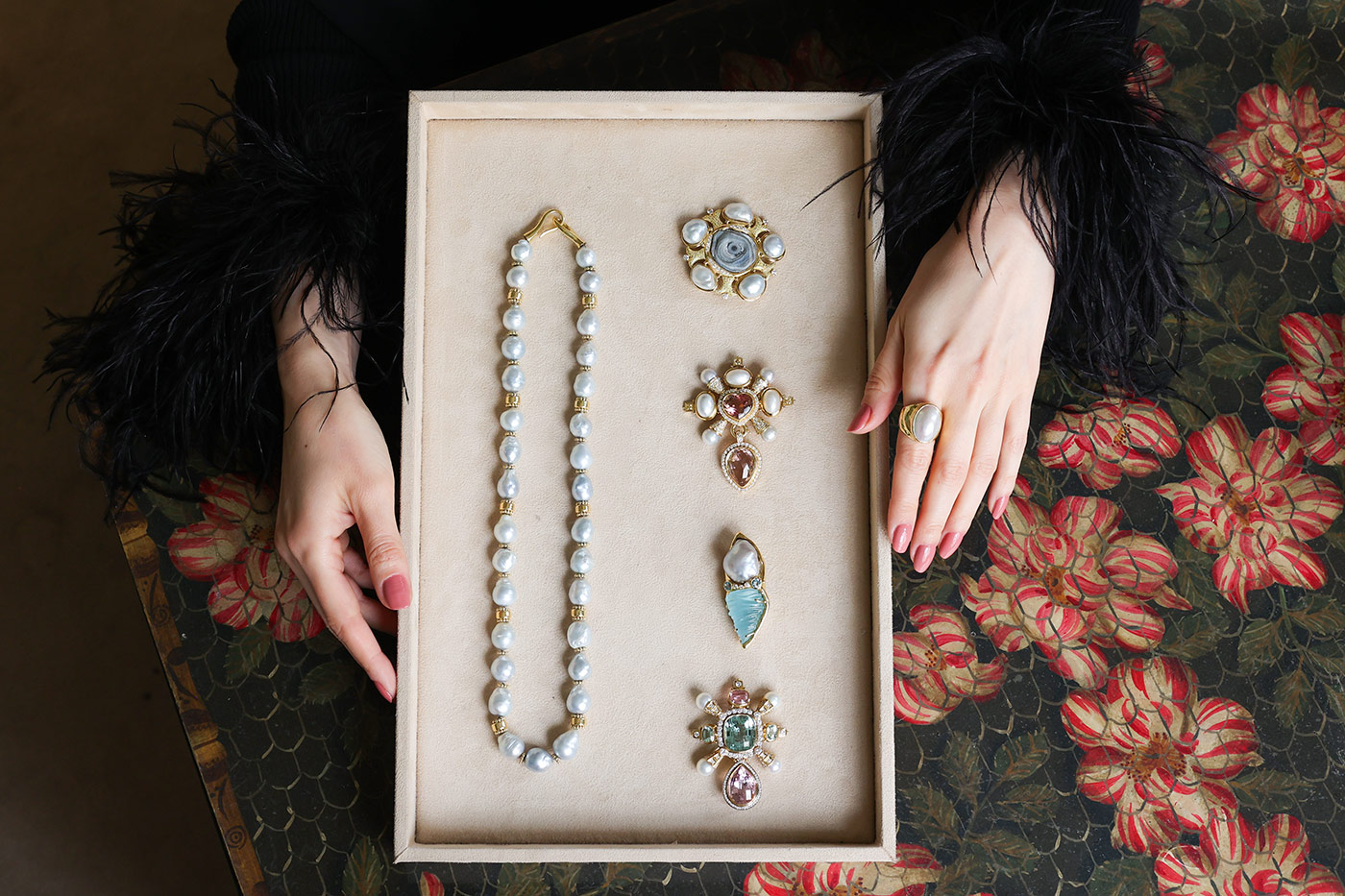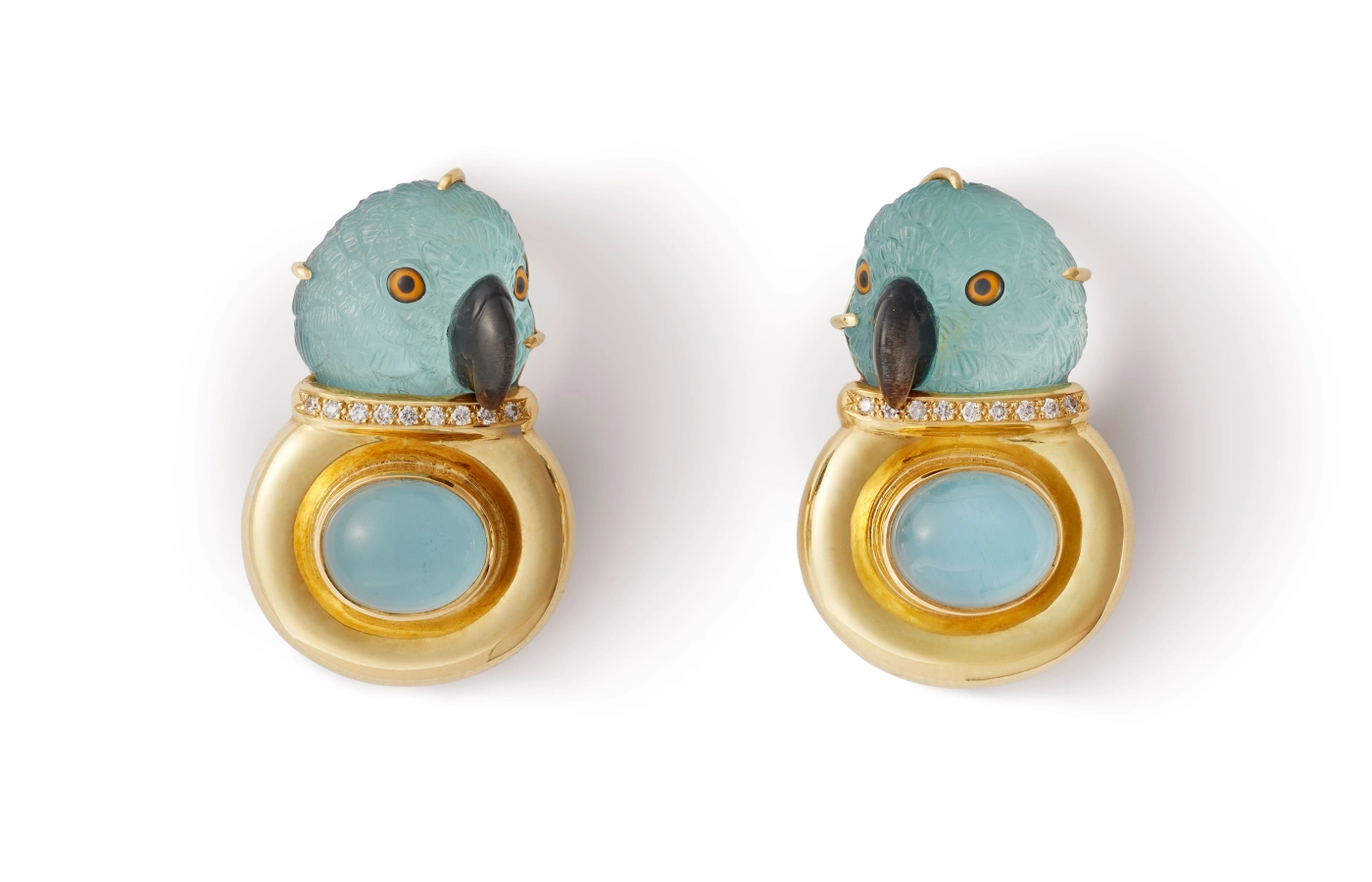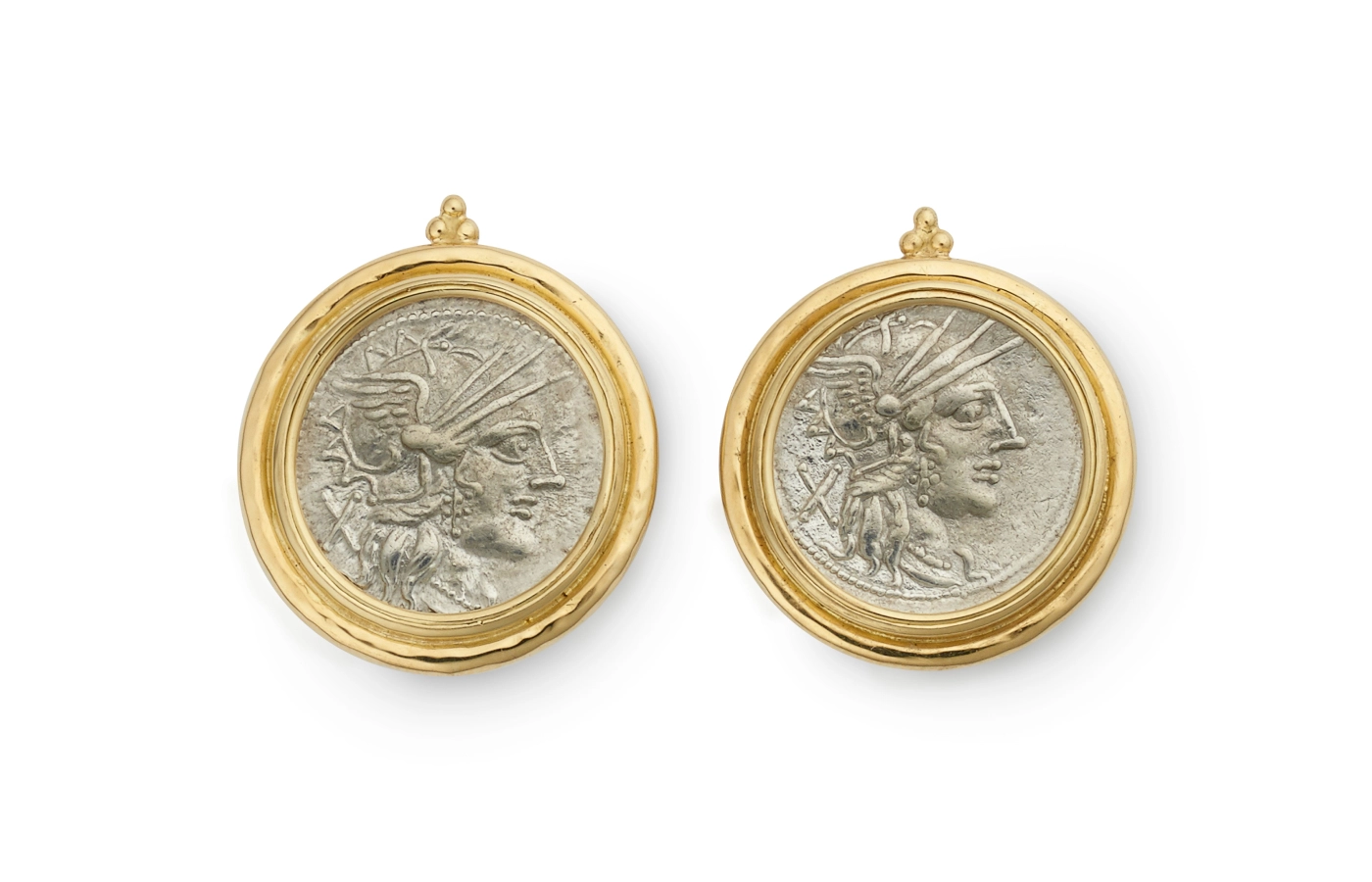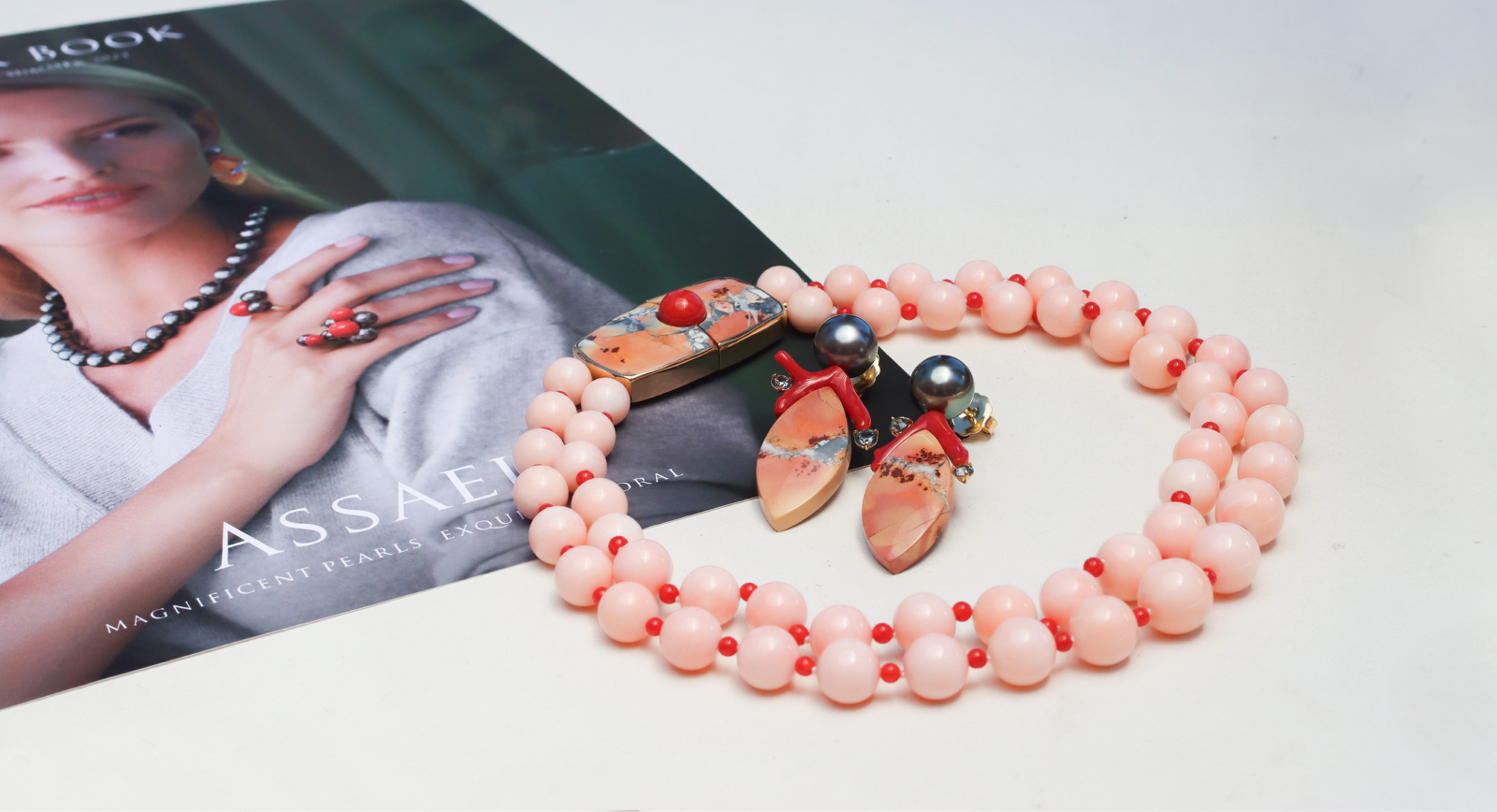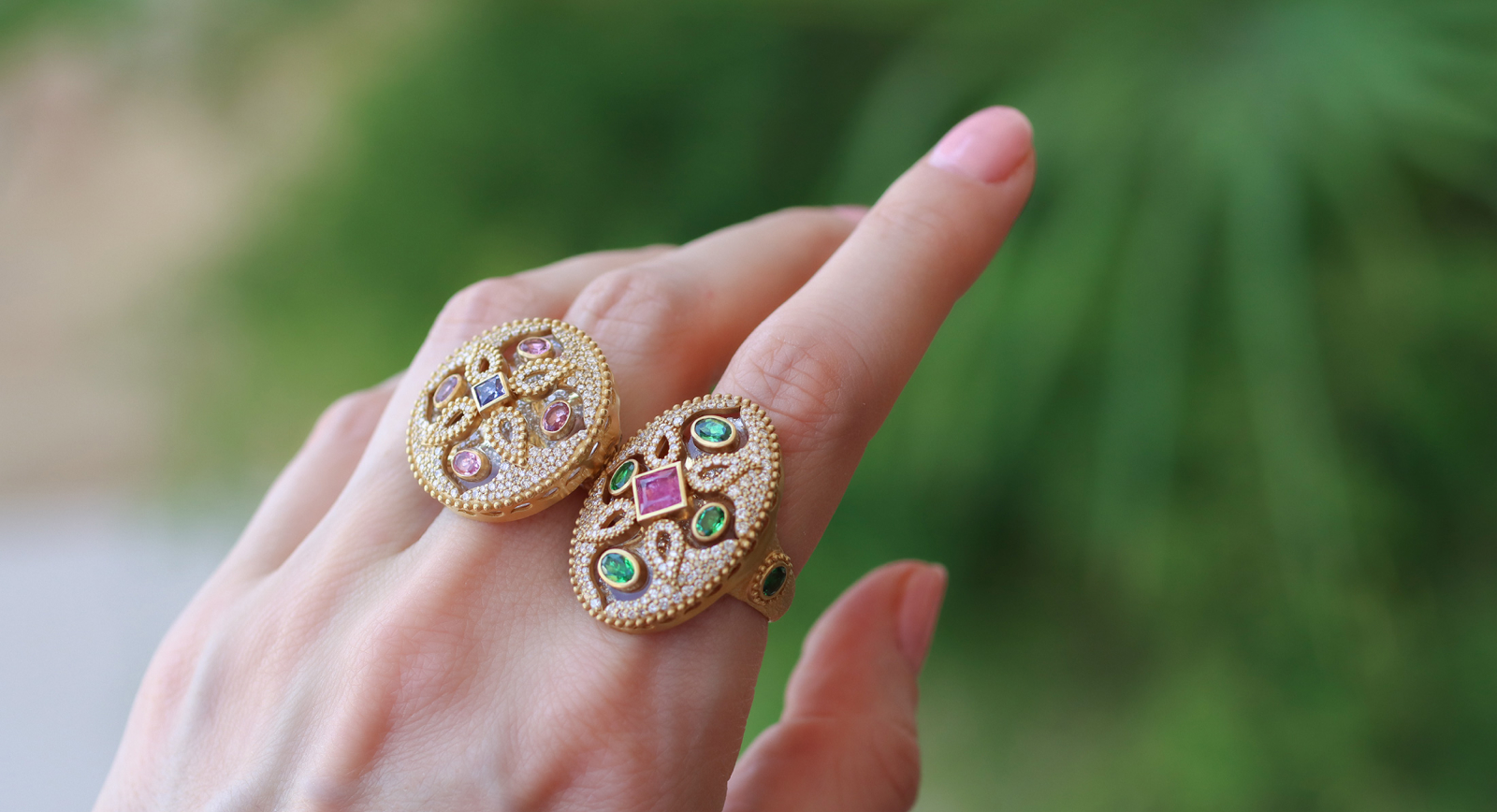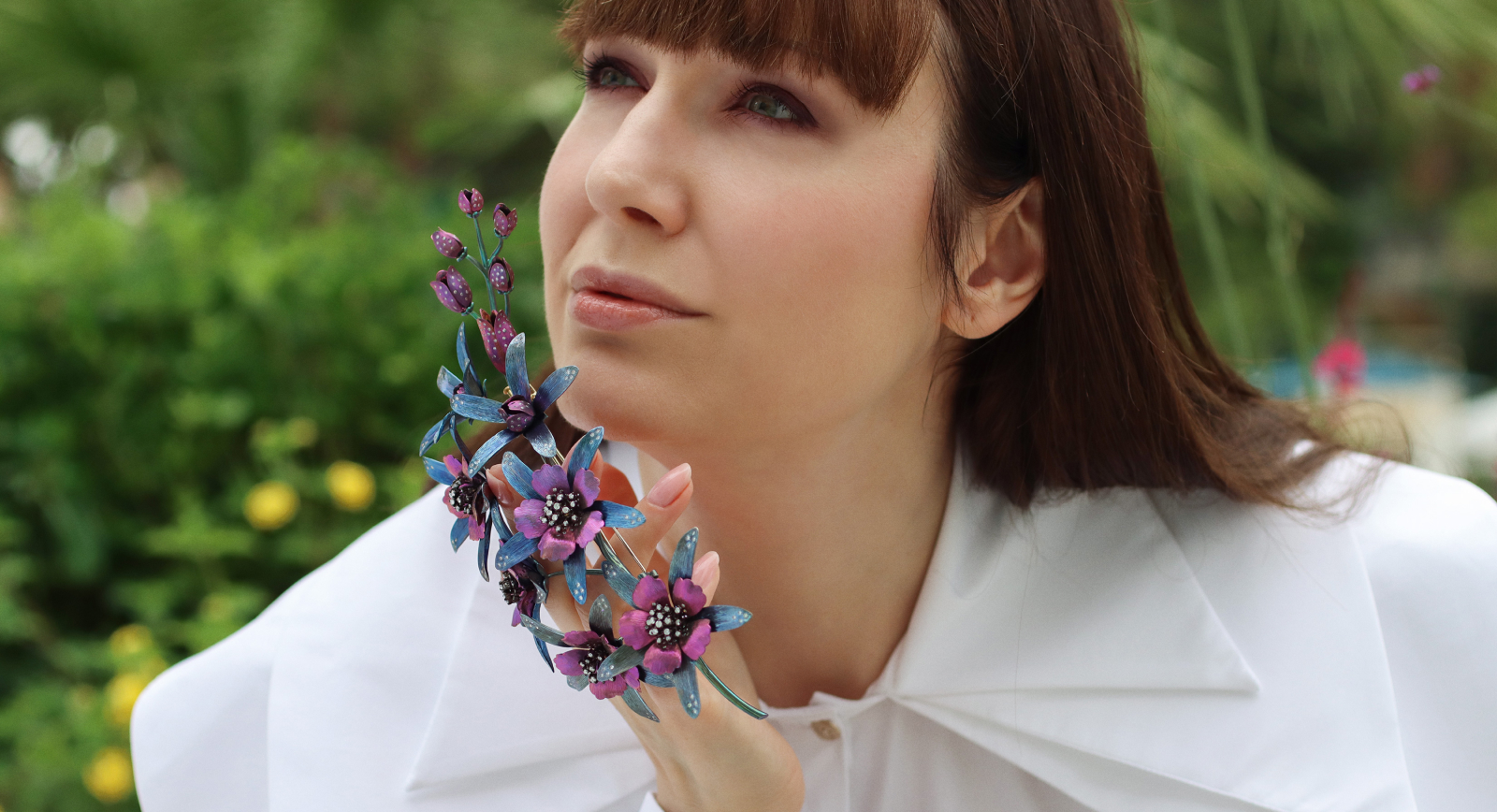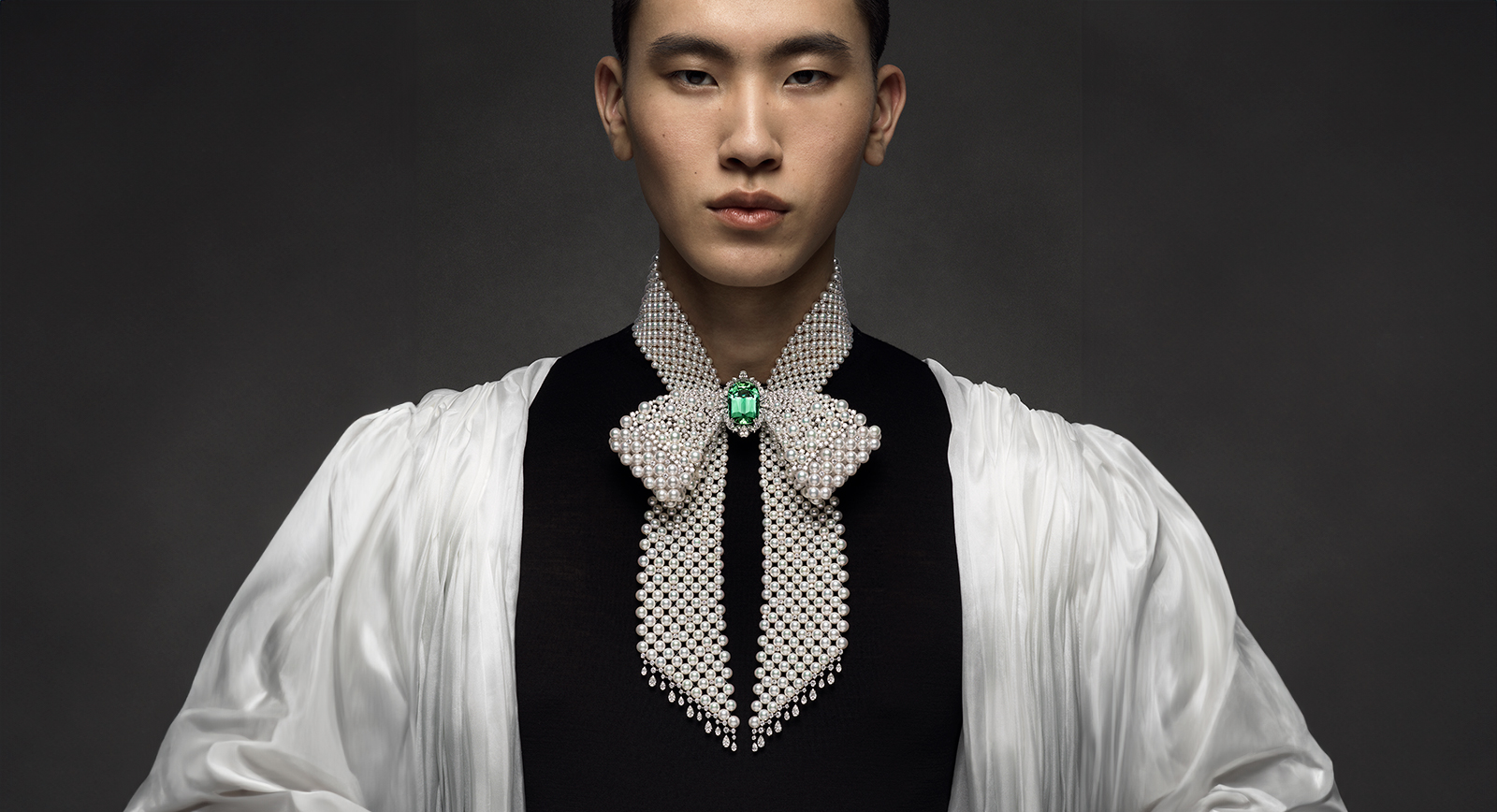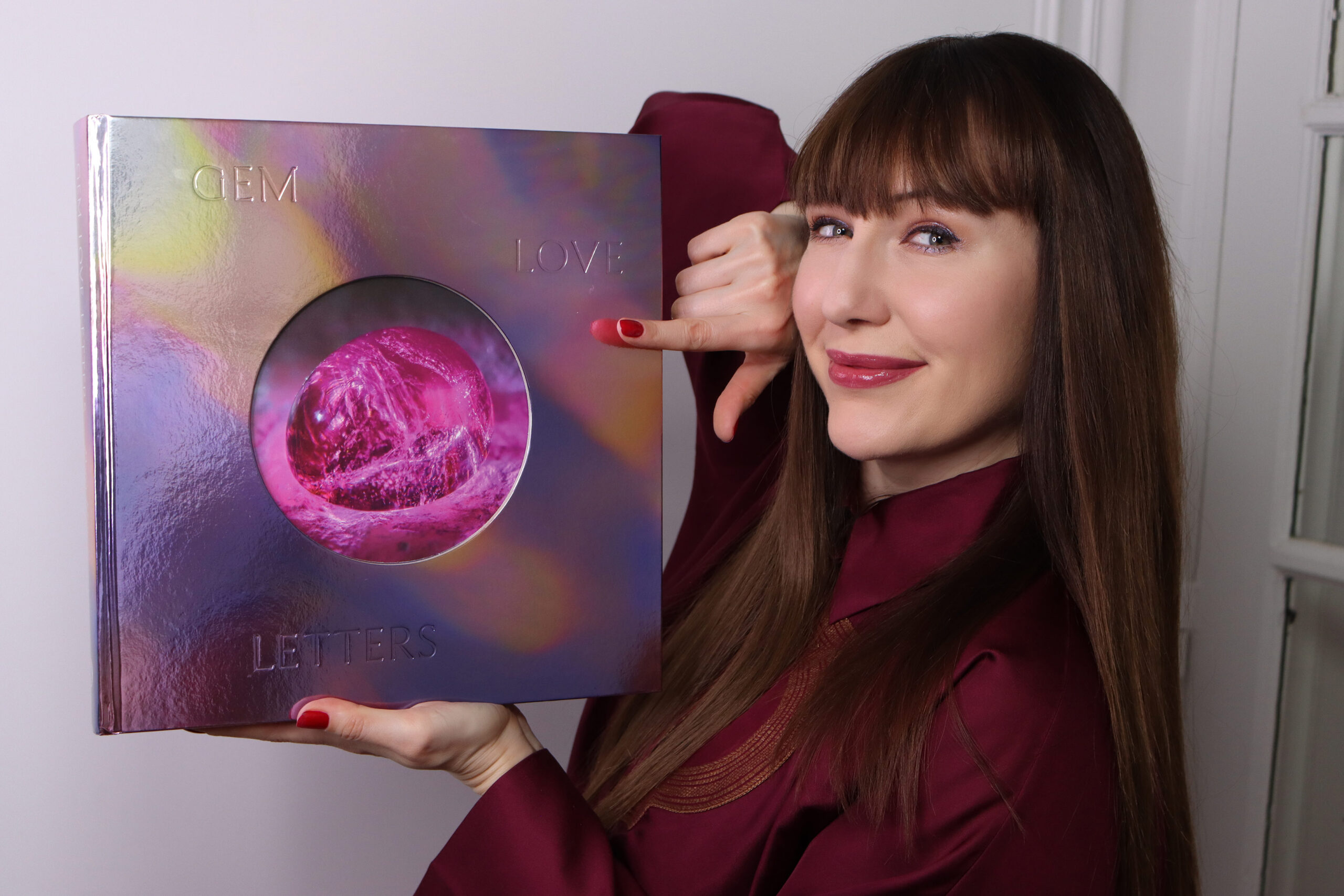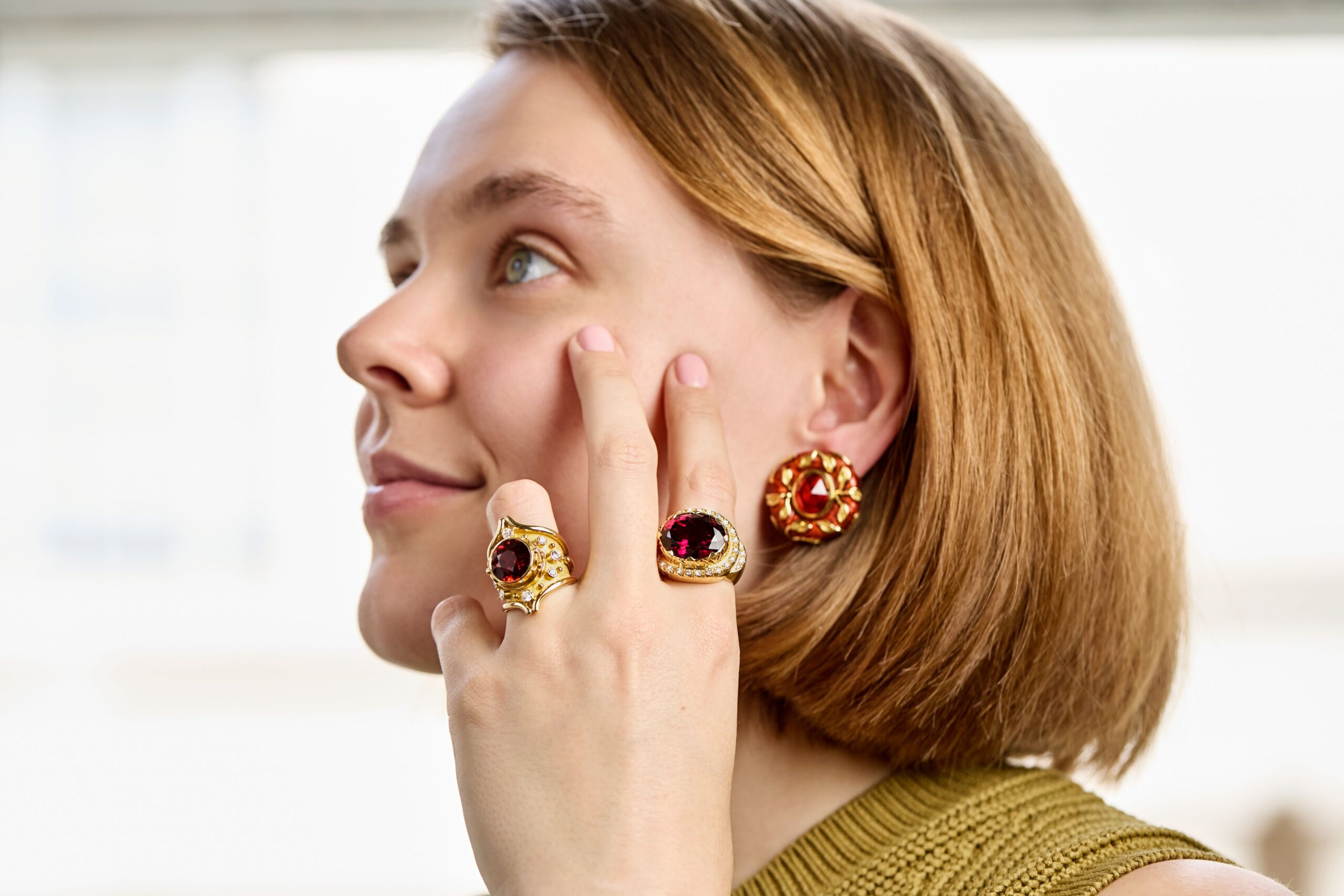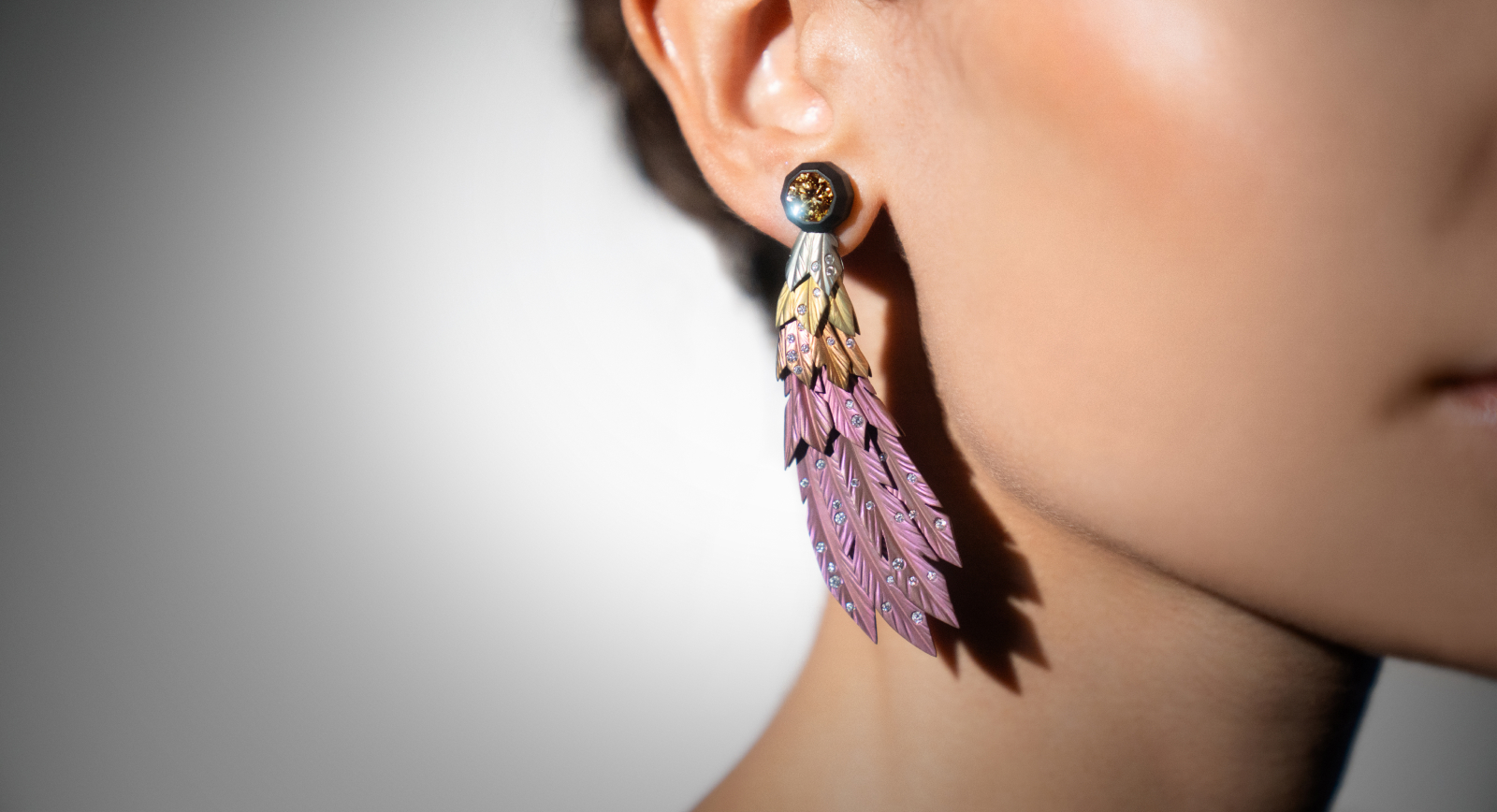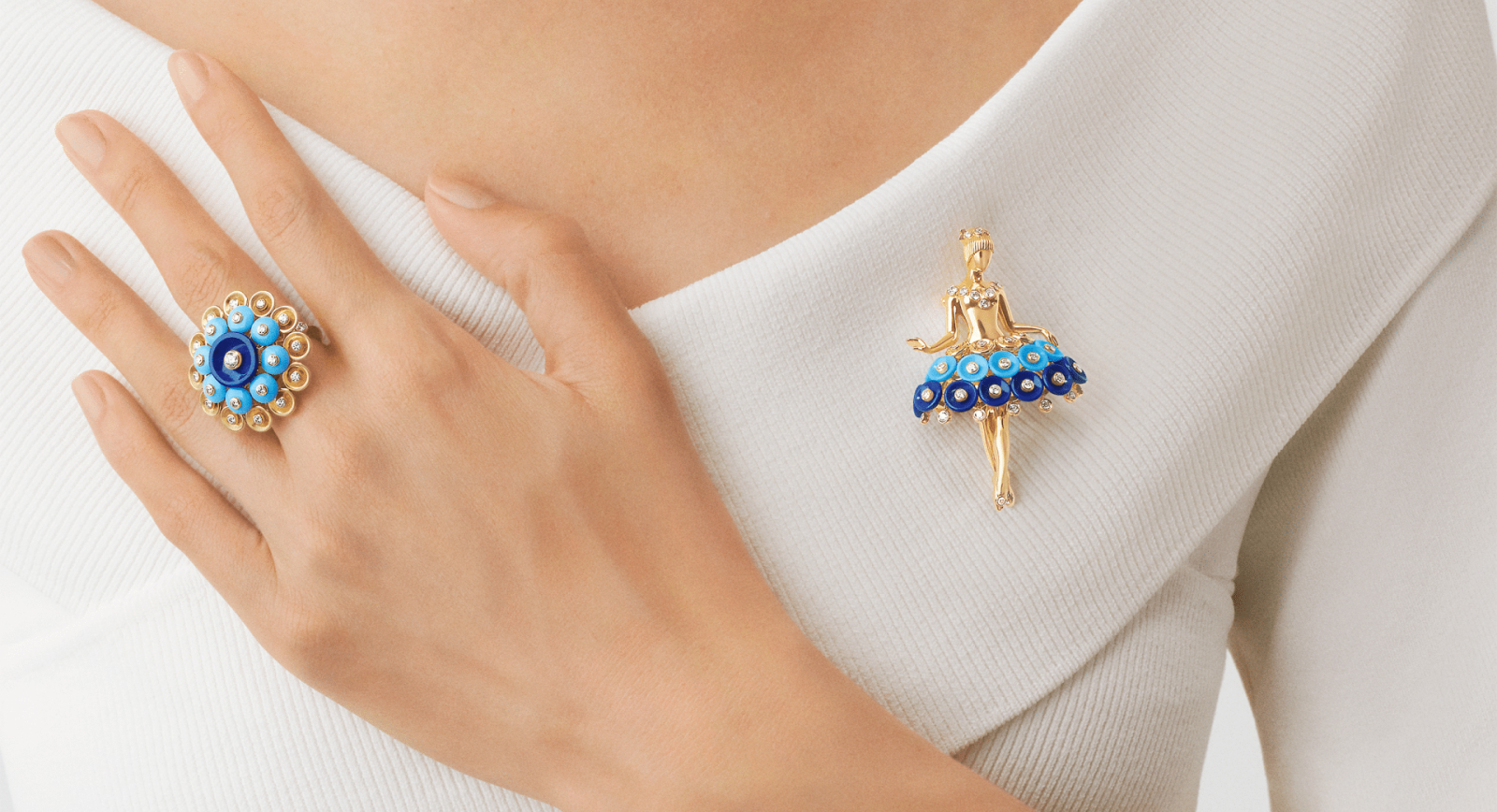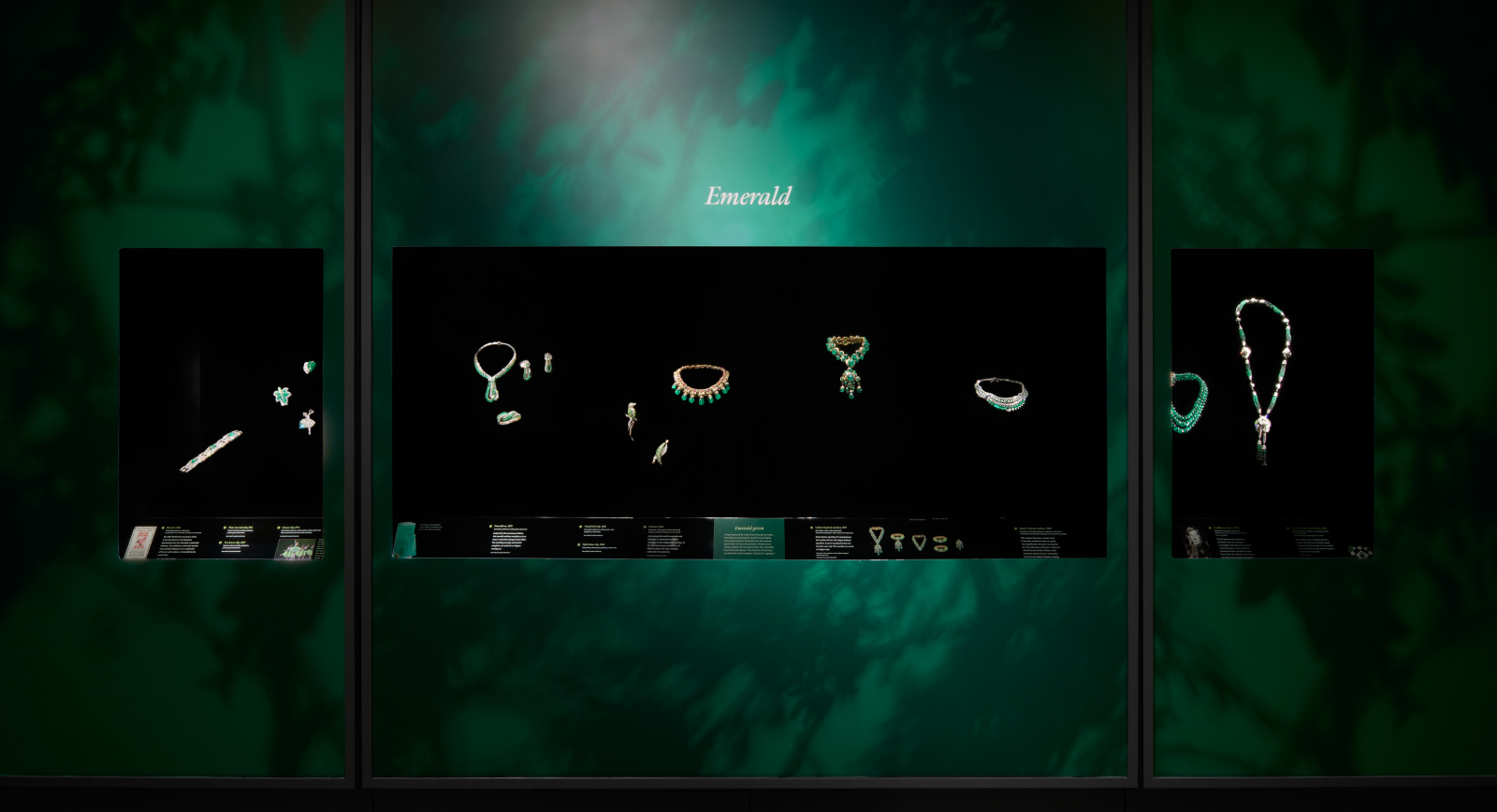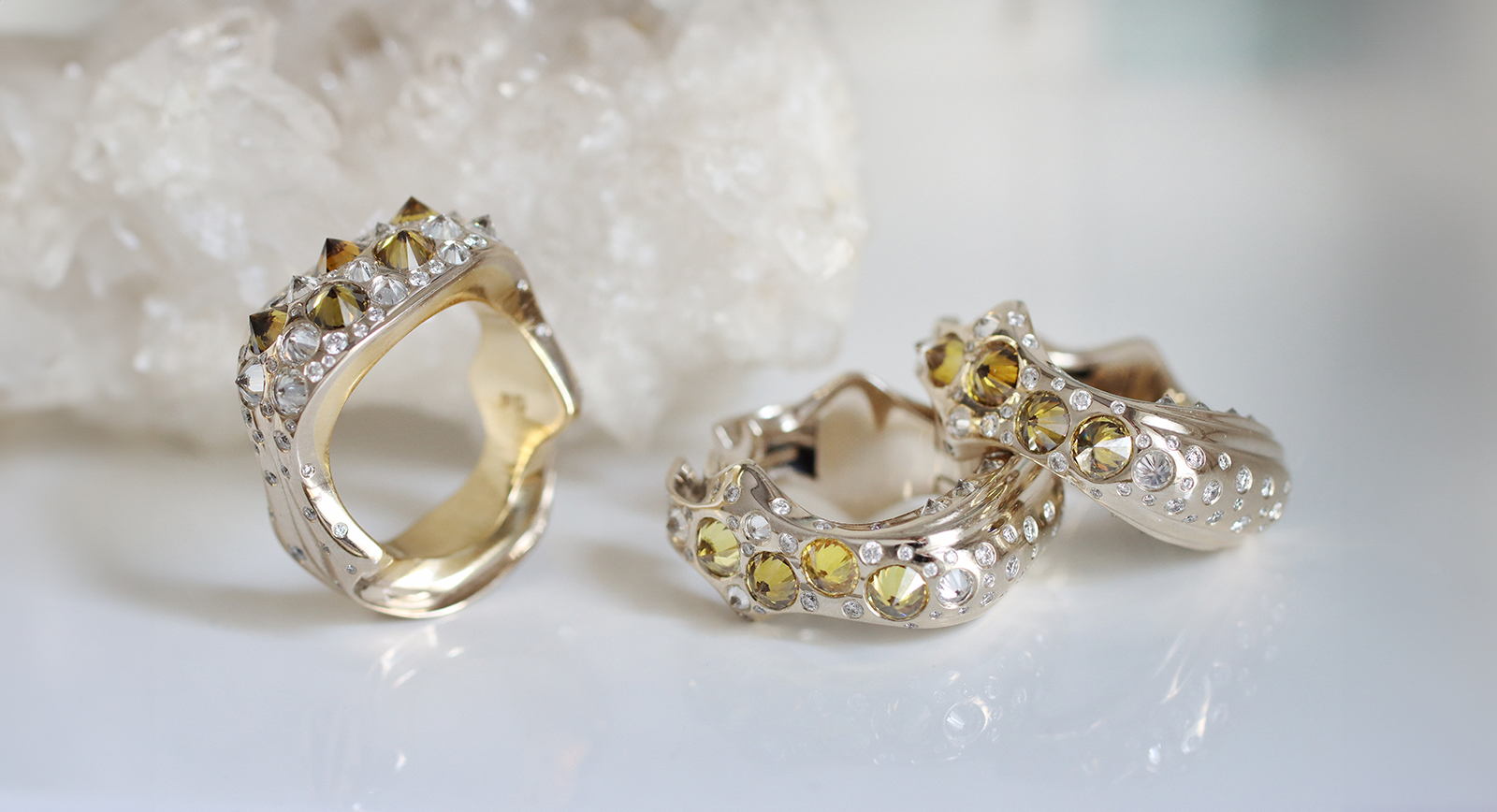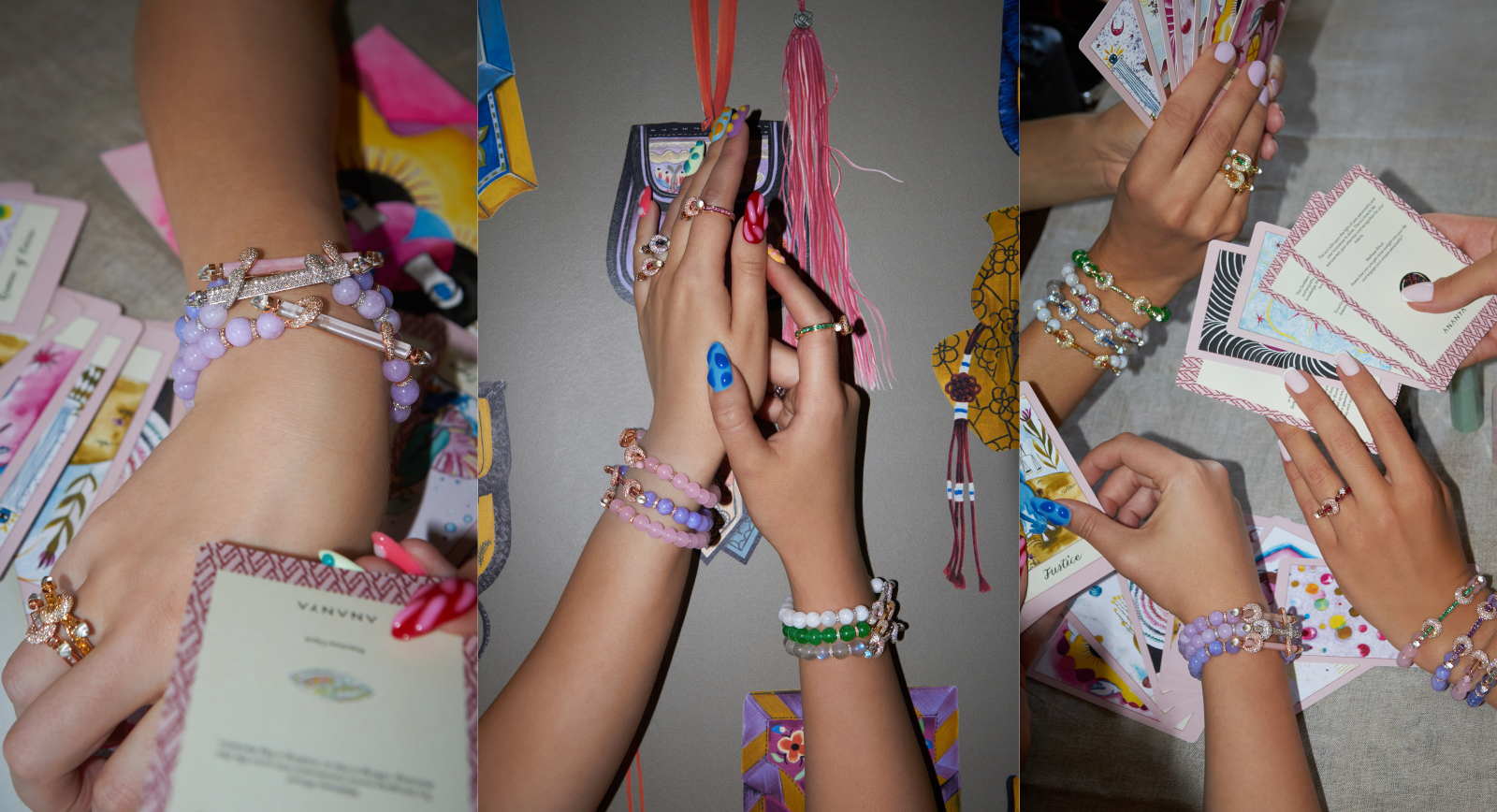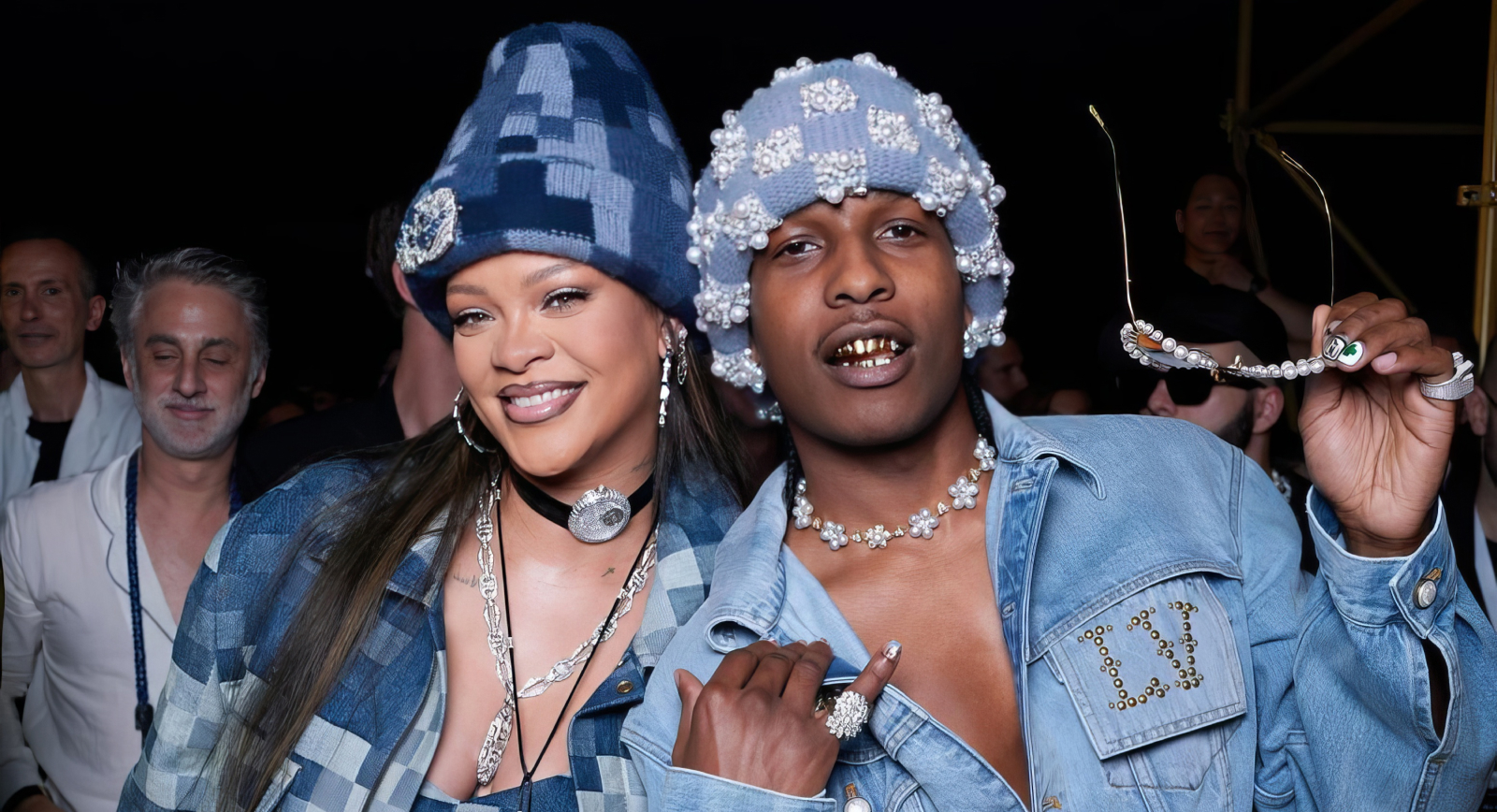
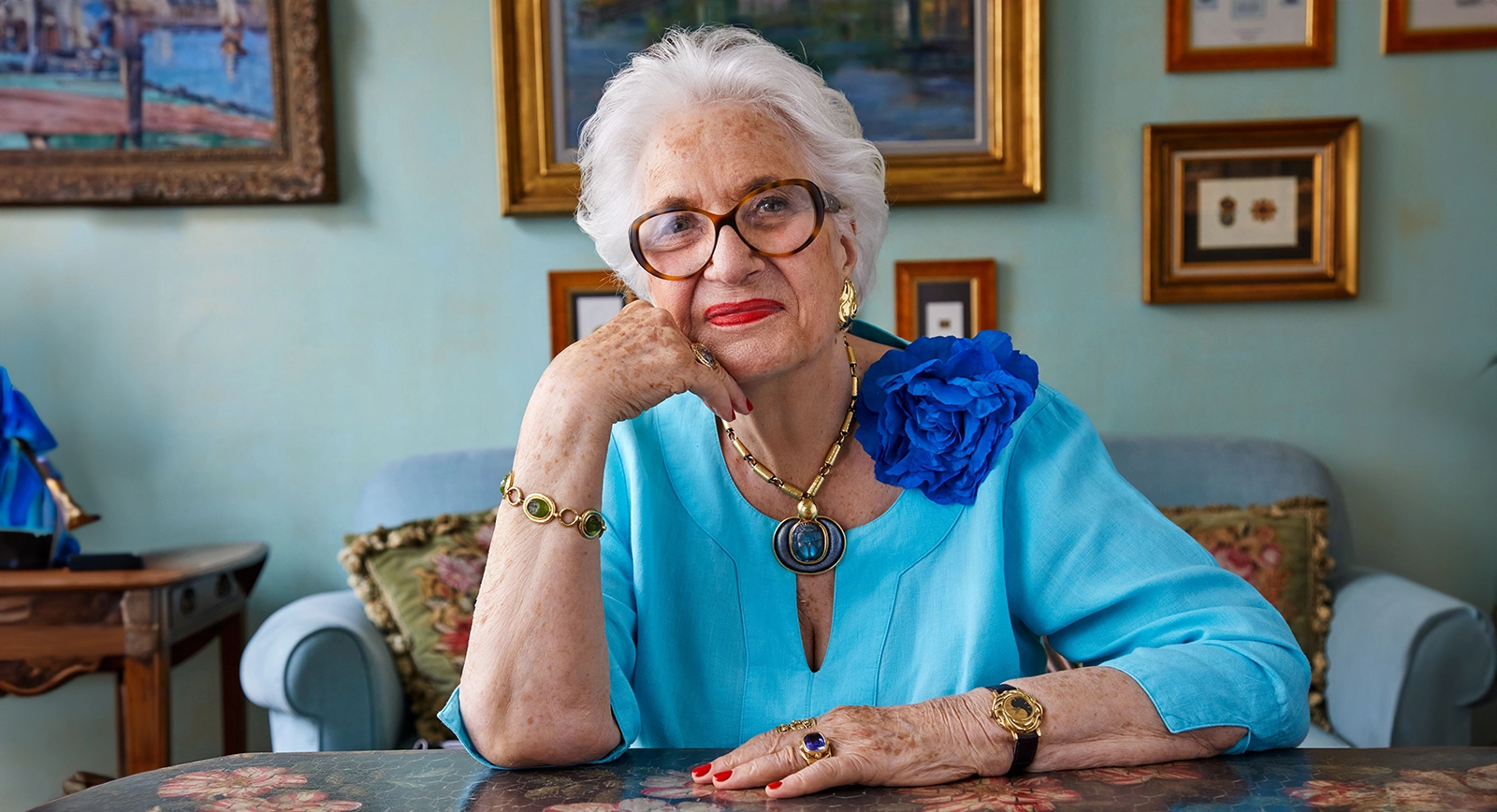
Design DNA: The 5 Elements of Elizabeth Gage’s Signature Style
British design icon Elizabeth Gage MBE has developed her quintessential aesthetic over more than 60 years as a professional artist jeweller. Although she no longer works at the bench personally, her skilled team of goldsmiths enact her vision of juicy cabochons, foxtail chains and sculpted gold, all with an antique flair that adds to each piece’s treasure-like appeal. I believe it is this honed sense of self – a distinctive designer DNA – that has contributed to Elizabeth’s phenomenal success. Here, I am pleased to present my interpretation of the top five elements that define her celebrated creativity…
Firstly, if you haven’t already, I would encourage you to read my insights into Elizabeth Gage, her jewellery identity and her London-based showroom in this article from last November. It was a wonderful time to be speaking with her as she was celebrating 60 years as an era-defining jeweller. I left her showroom in London’s Belgravia with an elevated respect for her fearless, independent spirit, perseverance and keen sense of self. Despite being surrounded by some of the ‘big names’ of mid-20th century British jewellery, like John Donald and Andrew Grima, she confidently held her own and established an eponymous brand of distinction. It is these kinds of uplifting success stories that are always fun to share via this platform.
Now, however, I want to drill down into the Elizabeth Gage ‘secret sauce’! Elizabeth tells me: “Rather than coming from a planned mission to achieve a goal, my designs are a natural progression. I do believe that to succeed in this business, your own personality must come through the pieces. So, yes, developing my signature style was very important to me.” As Elizabeth alludes to, an authentic and innate sense of style can never be truly copied. However, it is always possible to determine a handful of qualities and design decisions that set one artist apart from another. This is the fundamentals of an individual’s ‘design DNA’. Some weeks ago, I was confident that I had narrowed these traits down in Elizabeth Gage’s work, so I ran them past her and her team to see if they agreed with my assessment. Fortunately, we were all on the same page! Here’s the recipe you need to know…
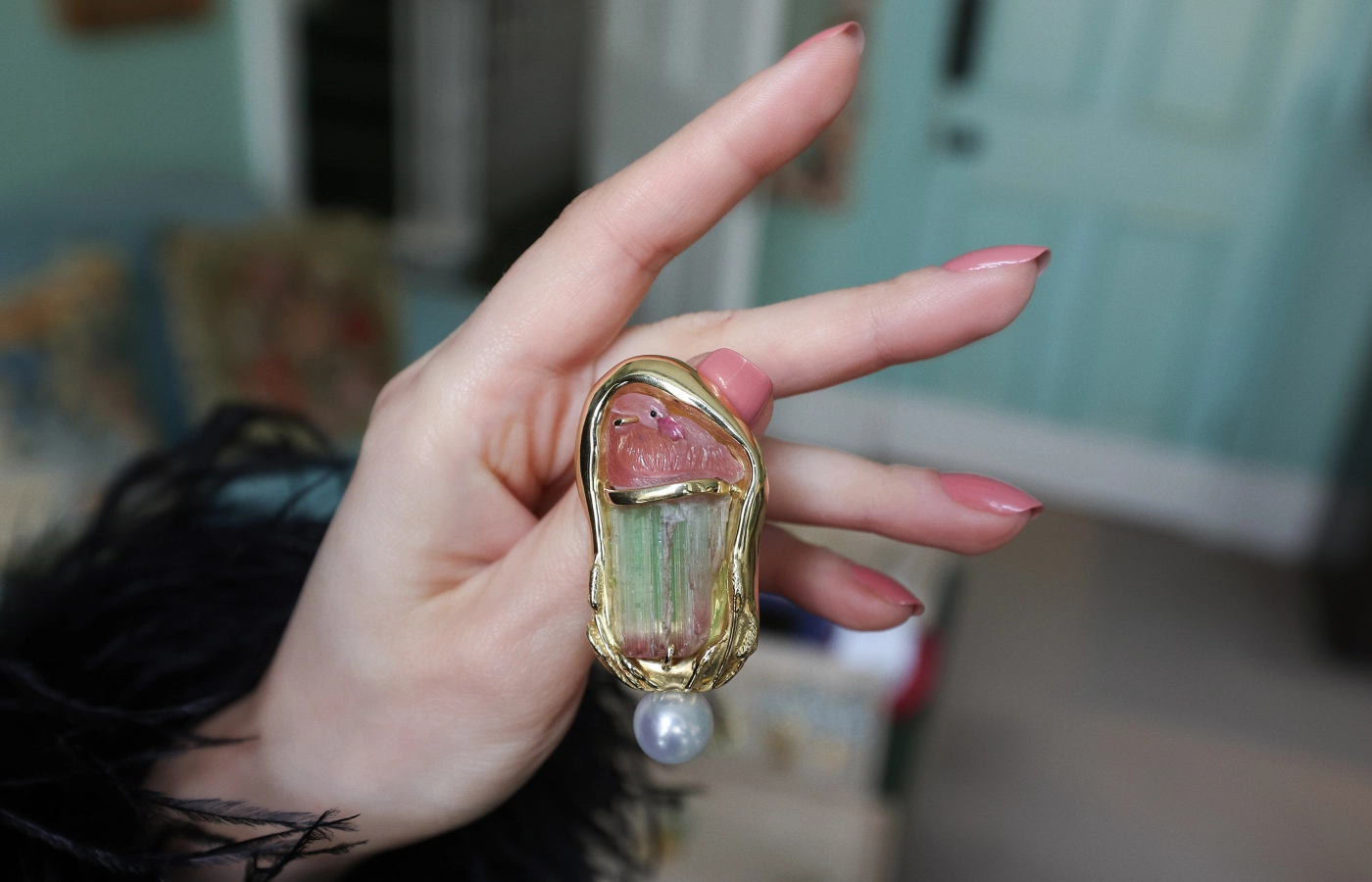
The ‘Bimini Flamingo Cameo pin by Elizabeth Gage with a 47.63-carat bi-colour tourmaline carved in cameo with a flamingo, alongside a South Sea cultured pearl and sculpted 18k yellow gold
Confident Cabochons
One of the most obvious threads in all of Elizabeth Gage’s designs is her preference for juicy, colourful and often (although not exclusively) warm-toned cabochons. Her signature Tapered Templar, Ottoman, Agincourt, and Charlemagne rings are the perfect examples of how these saturated, bezel-set gems add colour and contribute towards a centuries-old look and feel. Although I feel the brand’s aesthetic is most alive when using sunny minerals, like citrine, mandarin garnet and yellow beryl, it operates on an equal opportunities policy when it comes to gems! There are some sensational aquamarines, chalcedonies and moonstones that spring to mind.
But what about Elizabeth herself; what gemstones can’t she live without? “It is really difficult to choose, almost like picking a favourite family member,” she tells me. “But I would find it hard without tourmalines. They are so versatile in colour, shape and size and can be worn by everyone day and night.”
Foxtail Chains
The Agincourt ring is a staple in any Elizabeth Gage collector’s jewellery box. Each one is a remarkable feat of construction, consisting of decorated tiles of yellow gold held together by two foxtail chains threaded through a series of golden loops. If you’ve never heard of a foxtail chain, it is constructed from two rows of angled oval links facing each other, which are connected by a series of flat rings that run down the centre. Historically, this type of chain was said to mirror the shape of fur on a fox’s tail, although I see more of a braided or ‘French plait’ look. The benefit of using this kind of chain in rings is its flexibility, sleekness and durability; there’s less solder holding the links in place, which makes pieces neater and more supple.
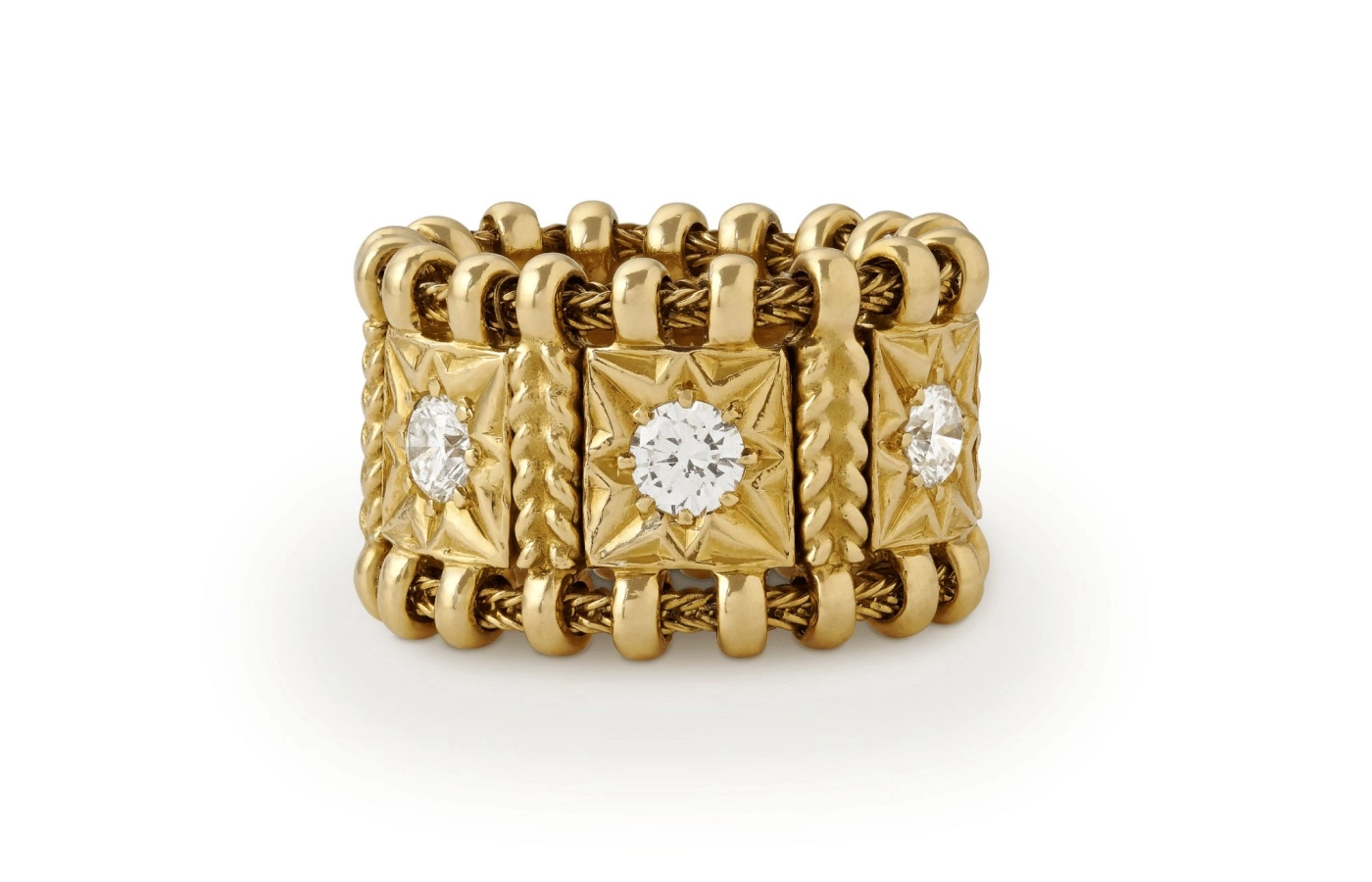
Elizabeth Gage Diamond Agincourt ring with a foxtail chain, set with six round brilliant-cut diamonds totalling 1.48 carats in six sections with carved star motifs, all in 18k yellow gold
Sculpted Gold
Another quintessential feature of Elizabeth Gage’s work is yellow gold… lashings of yellow gold! Not only is this gold abundant, but it is also sculpted and as much a part of each design as the gemstones and diamonds it houses. Elizabeth says: “Gold has been around for centuries, and so in itself is timeless. I first fell in love with it at the British Museum when I was in my twenties.” This is a good reminder of the historic flair that Elizabeth captures through gold, which makes her pieces radiate an ancient, Medieval vibe. For example, her Tapered Templar rings have classic wire-twist edges, while her Ottoman rings are decorated with individual beads and shapes of gold to add dimension.
Personality-Filled Parrots
Something that Elizabeth returns to time and time again is the parrot. She uses stones like peridot, watermelon tourmaline and labradorite to carve birds that capture the “colours, comical looks, and glamour” of the natural world. She continues: “I have been fortunate enough to see parrots in their natural habitats throughout the world many times. There is a blue parrot that I simply adore!” This passion definitely comes through in her work, especially the pieces I saw last year, like the Mozart pin with a 102.13-carat orange-red tourmaline and a 27.24-carat carved spectrolite snail cameo, and the 108.46-carat labradorite parrot cameo brooch with a large cultured keshi pearl.
Antique Sensibilities
Finally, I think it would be impossible to separate Elizabeth Gage from the antique aesthetic that underpins all her jewellery creations. This is achieved with gold, gemstones, shapes, patterns and finishes, but also through the blend of contemporary jewellery and genuine antique objects, like coins, Medieval bronze pendants, Romano-Celtic tinned bronze, roller seal plaques and so on. She tells me: “I am a student of history, and so I think that my love and passion for historical gemstones and bygone designs, especially coins, has filtered through into my pieces. When I pick up an ancient coin, it can transport me back and I feel that I am in the age they were actually used.” This is best demonstrated in bracelets that use coins as links to envelop the wrist and extravagant pendants that can be worn as pins or attached to beaded necklaces.
Although these are the elements that contribute towards Elizabeth Gage’s design DNA, the trick for any emerging designer or creative is finding your own! “I wouldn’t tell anyone what to do,” Elizabeth explains, “but I would suggest the following – be brave, believe in yourself, look, listen and be a sponge to learn from those that have gone before you.” Perhaps the more you unpick the signature style of others, the more you can begin to develop a style all your own. As Elizabeth says: “Go with your gut. You might get it wrong, but you will never regret trying.” Words to live by, don’t you think?

WORDS
Katerina Perez Katerina Perez is a jewellery insider, journalist and brand consultant with more than 15 years’ experience in the jewellery sector. Paris-based, Katerina has worked as a freelance journalist and content editor since 2011, writing articles for international publications. To share her jewellery knowledge and expertise, Katerina founded this website and launched her @katerina_perez Instagram in 2013.
Related Articles
Best Watches of 2024: The Top Timepiece Launches of the Year


Latest Stories
Add articles and images to your favourites. Just

Jeweller of the Month:MADLY Gems
Singaporean brand celebrates 10-year anniversary
Jewels Katerina Perez Loves
Continue Reading

Ask Katerina:Diamond Jewellery Styling Tips for Modern Dressing
Here are some of the answers I gave during the presentation to aid your jewellery dressing…
Brand Focus:Van Cleef & Arpels
Jewellery Insights straight to your inbox
